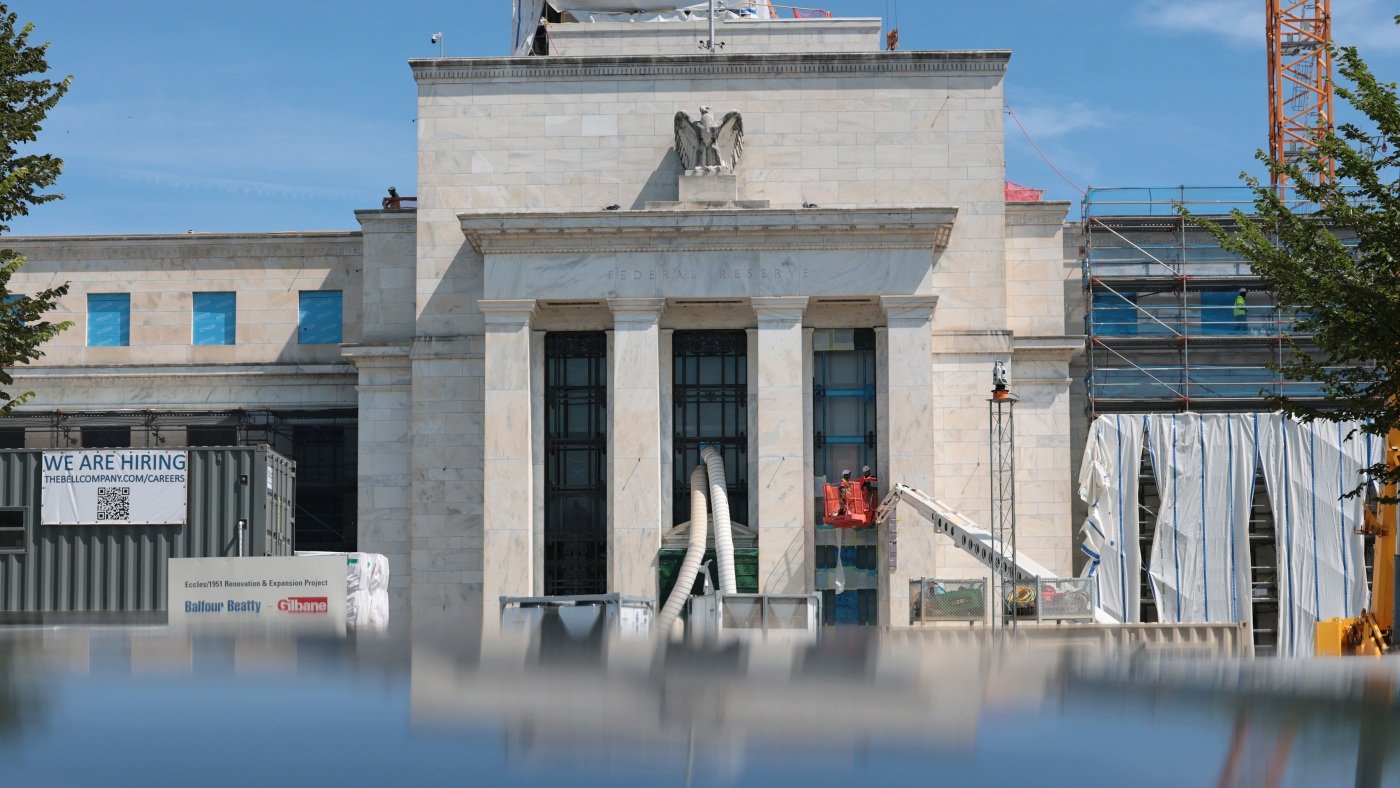The Renovation Rumble: Trump, Powell, and the Fed’s Fiscal Facelift
Introduction: A Clash of Titans
The Federal Reserve, often regarded as the bastion of economic stability, found itself at the center of an unusual spectacle when former President Donald Trump paid a visit to its headquarters. What began as a routine inspection of ongoing renovations quickly escalated into a public display of tension between the former president and Federal Reserve Chair Jerome Powell. This encounter, though seemingly trivial on the surface, revealed deeper fissures in the relationship between the executive branch and the independent central bank. The disagreement over renovation costs became a proxy for broader ideological clashes, political maneuvering, and the delicate balance of power within the U.S. financial system.
The Backstory: A President and His Fed
Trump’s relationship with the Federal Reserve was anything but conventional. Throughout his presidency, he broke with long-standing tradition by repeatedly criticizing the Fed’s monetary policy, particularly its interest rate decisions. His public outcries against the Fed’s actions were unprecedented, as he believed that higher interest rates were stifling economic growth. Trump’s criticisms extended to Powell personally, with the former president even suggesting that Powell should be fired—a move that would have set a dangerous precedent for the Fed’s independence.
The Federal Reserve’s independence is a cornerstone of U.S. economic policy, designed to shield monetary decisions from short-term political pressures. This independence allows the Fed to focus on long-term economic goals, such as price stability and full employment, without being swayed by electoral cycles or political agendas. Trump’s repeated interventions raised serious concerns about the erosion of this independence, potentially undermining the Fed’s credibility and effectiveness.
The Renovation Inspection: A Pretext for Conflict
The official reason for Trump’s visit to the Federal Reserve was to inspect the ongoing renovations at its headquarters. While this may have seemed like a mundane task, it provided Trump with a platform to engage with Powell and reiterate his criticisms. The renovations, which included upgrades to the building’s infrastructure and security systems, became a symbol of what Trump perceived as wasteful spending and mismanagement within the Fed.
By focusing on the cost overruns associated with the renovations, Trump shifted the public discourse away from complex monetary policy debates and toward a more relatable issue: government spending and taxpayer dollars. This tactic allowed him to frame the Fed as an institution that was out of touch with the financial realities faced by ordinary Americans. The renovation costs, though relatively small in the context of the Fed’s overall budget, became a convenient target for Trump’s broader critique of the institution.
The Tussle: A Clash of Styles and Philosophies
The disagreement between Trump and Powell over the renovation costs was more than just a dispute about money. It encapsulated a deeper clash of styles, philosophies, and economic perspectives. Trump, with his background in business and real estate, viewed the cost overruns as a sign of incompetence and a failure to control spending. He likely saw the renovations as an example of the Fed’s inability to manage its finances efficiently, a critique that resonated with his broader agenda of fiscal responsibility.
Powell, on the other hand, defended the renovations as necessary for the long-term functionality and security of the Federal Reserve. He likely argued that such projects inevitably involve unforeseen costs and complexities, and that the benefits of the upgrades outweighed the expenses. This difference in perspective highlighted the contrasting views on the role of government spending and the importance of long-term investments in public institutions.
The Implications: Independence Under Pressure
Trump’s visit and his public disagreement with Powell sent a chilling message about the independence of the Federal Reserve. The former president’s willingness to directly criticize the Fed Chair, even on a seemingly trivial matter, undermined the credibility of the central bank and raised concerns about political interference in monetary policy. This pressure, whether intentional or not, created a climate of uncertainty that could potentially influence the Fed’s decisions in the future.
The independence of the Federal Reserve is crucial for maintaining price stability and fostering sustainable economic growth. When political considerations overshadow economic realities, the long-term health of the economy can be compromised. The events surrounding Trump’s visit served as a stark reminder of the importance of safeguarding the Fed’s independence and ensuring that monetary policy is guided by sound economic principles, not political pressures.
The Aftermath: Lingering Questions and Future Challenges
The immediate aftermath of Trump’s visit saw a flurry of media coverage and renewed debate about the proper relationship between the President and the Federal Reserve. While the specific issue of the renovation costs may fade from public attention, the underlying tensions between the executive branch and the central bank remain. Future presidents may be tempted to exert similar pressure on the Fed, particularly during times of economic uncertainty or political pressure.
The long-term implications of Trump’s actions on the Fed’s independence are still unfolding. It remains to be seen whether future Fed Chairs will be able to resist political pressure and maintain the integrity of monetary policy. The events surrounding the renovation dispute serve as a valuable lesson about the importance of defending the independence of the Federal Reserve and ensuring that it can operate without undue political influence.
Conclusion: A Symbolic Showdown
Ultimately, Trump’s visit to the Federal Reserve and his tussle with Jerome Powell over renovation costs was more than just a disagreement about money. It was a symbolic showdown between the executive branch and the independent central bank, highlighting the ongoing tensions between political expediency and economic stability. The event served as a stark reminder of the importance of safeguarding the Fed’s independence and ensuring that monetary policy is guided by sound economic principles, not political pressures. The long-term consequences of this episode remain to be seen, but it undoubtedly leaves a mark on the history of the Federal Reserve and its relationship with the U.S. government.







